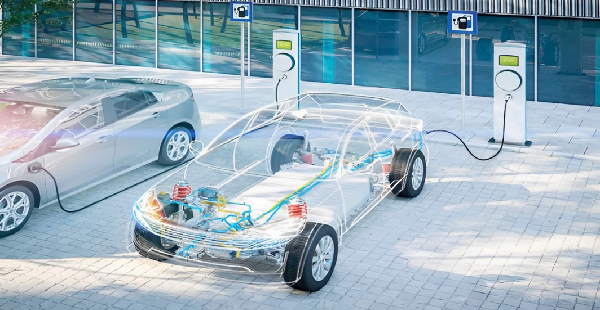
Ethiopia has enormous renewable energy potential, making it one of Africa’s top countries in this area. The government has invested largely in harnessing its renewable resources, which include hydropower, wind, and solar energy.
Ethiopia, for example, has significant hydropower potential. The country has numerous rivers and a good geography, making it ideal for generating hydropower. For instance, the Grand Ethiopian Renaissance Dam (GERD) is one of Africa’s largest hydroelectric projects, capable of producing more than 5,000 megawatts (MW). It is intended to greatly increase the country’s electricity-producing capacity. Additional projects and hydropower facilities contribute to the national grid, with plans for future expansion in several river basins.
The country also has wind power potential. Ethiopia has significant wind energy potential, notably in its eastern and southern regions. The typical wind speeds in these places are ideal for wind farm development. Existing wind farms may be a good example of this phrase. With a capacity of 120 MW, the Ashegoda Wind Farm is one of Africa’s largest wind farms, demonstrating the potential of wind energy in Ethiopia. Furthermore, additional wind farms are planned to tap into this resource, with the goal of diversifying the energy mix.
Solar energy is yet another significant potential of the country. Ethiopia receives strong levels of solar radiation throughout the year, making it an ideal location for solar energy generation. Solar energy, in particular, has the potential to play an important role in providing electricity to rural and distant locations with limited grid connection. Solar household systems and micro grids are being encouraged to improve energy access. Currently, there are continuous efforts to build large-scale solar power plants to supplement existing energy sources.
The country’s geothermal energy potential is also very impressive. Ethiopia has tremendous geothermal potential, especially in the East African Rift Valley. The country’s geothermal capacity is projected to be over 10,000 megawatts. The Aluto Langano Geothermal Power Plant is an excellent example in this regard. It is currently functioning, and there are plans to continue exploring and developing geothermal resources.
These, together with Ethiopia’s renewable energy potential, imply that the country has enormous potential and mostly untapped renewable resources. Hence, it is appropriate to ask how this potential can be leveraged without affecting the environment? Another essential question is what kind of enabling environment does the country have?
Taking this potential into mind, Ethiopia can create non-motorized transportation networks. Given Ethiopia’s increased interest in sustainable transportation and renewable energy, producing Electric Vehicles (EVs) represents a viable prospect.
Researches and feasibility studies have determined the nation’s marketing capacity examining the demand for electric automobiles, buses, and commercial vehicles in the local market. Additionally, there is a competitive environment nationwide. When considering the expenses of production, including labor, materials, and technology, the nation also has comparative advantages over other nations.
The government also fosters an atmosphere conducive to the achievement of non-motorized transportation activities. The government developed legislative frameworks and regulations for electric vehicles, which included incentives, tax exemptions, and import taxes on EV components. Furthermore, a directive establishing a regulatory framework for electric vehicle charging stations was recently adopted. The directive addresses licensing, service pricing, power supply rules, and security.
As a result, this directive mandates that an electric vehicle charging station be installed every 50 kilometers. It added that there would be electric vehicle charging facilities placed every 50 to 120 kilometers around the nation. Every 50 kilometers, commercial charging stations will be positioned on both sides of the route. On the other hand, charging facilities for buses and heavy vehicles would be spaced every 120 kilometers along major highways. Hence, Ethiopia can use its energy potential by expanding non-motorized transportation systems.
What’s more, the Ethio-Engineering Group revealed that it has been preparing to manufacture electric cars in Ethiopia. The group advanced its preparations and completed the documentation while taking into consideration the nation’s natural resources.
Suleiman Dedefo, the group’s CEO, informed local media that Ethiopia has an abundance of lithium, an essential component in the making of electric vehicle batteries. Although raw lithium is currently shipped at a low cost to international battery makers, the Group is aggressively seeking collaborations with technology providers to process the material locally for domestic battery production.
According to him, Ethio-Engineering Group has 550 highly skilled engineers who might be used to manufacture electric vehicles. Using their skills, the group will begin production of electric public transit and autos.
In line with Ethiopia’s broader environmental measures, such as the green legacy projects, the introduction of electric automobiles will be a critical step in reducing pollution and the country’s dependency on petroleum-fueled vehicles.
Ethio-Engineering Group (EEG) is a governmental business enterprise re-established in September 2020 under the FDRE Council of Ministers Regulation No. 475/2020.
The main purpose of the re-establishment of the group is to enable it to play a leading role in the development of heavy industries in the country towards meeting the national vision of transforming into an industrial-led economy.
According to Urban Benywanira, an expert on Article 6 and carbon pricing from the United Nations Framework Convention on Climate Change Regional Collaboration Centre for East and Southern Africa, Ethiopia’s attention to non-motorized and electric transport shows its commitment to the implementation of international agreements.
Paying attention to non-motorized and electric transportation systems not only shows its commitment to the implementation of international agreements and the reduction of greenhouse gas emissions but also makes use of its energy and natural resources’ potential, he added.
He also pointed out that Ethiopia’s carbon trade strategy will help to use the potential of the country by intertwining with the Paris Climate Agreement. Besides, the development works on renewable energy options play an irreplaceable role in creating a healthy environment for citizens.
Indeed, the Ethio-Engineering Group initiative in manufacturing electric vehicles serves three purposes: utilizing the country’s natural resources and energy potential, as well as mitigating climate change. Therefore, Ethiopia should continue to invest in and develop its renewable resources to achieve energy security, promote sustainable development, and position itself as an African leader in renewable energy.
Furthermore, the emphasis on hydropower, wind, solar, and geothermal energy not only meets domestic energy demands, but also creates chances for regional cooperation, economic growth, and global climate change mitigation. As a result, producing electric automobiles becomes profitable, allowing the country to build a thriving electric vehicle manufacturing industry that supports economic growth, job creation, and environmental sustainability.
BY EPHREM ANDARGACHEW
THE ETHIOPIAN HERALD WEDNESDAY 12 FEBRUARY 2025





